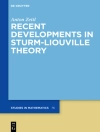This book includes the proceedings of the first workshop on Recommender Systems in Fashion 2019. It presents a state of the art view of the advancements within the field of recommendation systems with focused application to e-commerce, retail and fashion. The volume covers contributions from academic as well as industrial researchers active within this emerging new field.
Recommender Systems are often used to solve different complex problems in this scenario, such as social fashion-based recommendations (outfits inspired by influencers), product recommendations, or size and fit recommendations.
The impact of social networks and the influence that fashion influencers have on the choices people make for shopping is undeniable. For instance, many people use Instagram to learn about fashion trends from top influencers, which helps them to buy similar or even exact outfits from the tagged brands in the post. When traced, customers’ social behavior can be avery useful guide for online shopping websites, providing insights on the styles the customers are really interested in, and hence aiding the online shops in offering better recommendations and facilitating customers quest for outfits.
Another well known difficulty with recommendation of similar items is the large quantities of clothing items which can be considered similar, but belong to different brands. Relying only on implicit customer behavioral data will not be sufficient in the coming future to distinguish between for recommendation that will lead to an item being purchased and kept, vs. a recommendation that might result in either the customer not following it, or eventually return the item.
Finding the right size and fit for clothes is one of the major factors not only impacting customers purchase decision, but also their satisfaction from e-commerce fashion platforms. Moreover, fashion articles have important sizing variations. Finally, customer preferences towards perceived article size and fit for their body remain highly personal and subjective which influences the definition of the right size for each customer.
The combination of the above factors leaves the customers alone to face a highly challenging problem of determining the right size and fit during their purchase journey, which in turn has resulted in having more than one third of apparel returns to be caused by not ordering the right article size. This challenge presents a huge opportunity for research in intelligent size and fit recommendation systems and machine learning solutions with direct impact on both customer satisfaction and business profitability.
Содержание
Part 1. Cold Start in Recommendations.- Chapter 1. Fashion Recommender Systems in Cold Start ( Mehdi Elahi).- Part 2. Complementary and Session Based Recommendation.- Chapter 2. Enabling Hyper-Personalisation: Automated Ad Creative Generation and Ranking for Fashion e-Commerce (Sreekanth Vempati).- Chapter 3. Two-Stage Session-based Recommendations with Candidate Rank Embeddings (Jose Antonio Sanchez Rodrguez).- Part 3. Outfit Recommendations.- Chapter 4. Attention-based Fusion for Outfit Recommendation (Katrien Laenen).- Chapter 5. Outfit2Vec: Incorporating Clothing Hierarchical Meta Data into Outfits’ Recommendation (Shatha Jaradat).- Part 4. Sizing and Fit Recommendations.- Chapter 6. Learning Size and Fit from Fashion Images (Nour Karessli).- Part 5. Generative Outfit Recommendation.- Chapter 7. Generating High-Resolution Fashion Model Images Wearing Custom Outfits (Gokhan Yildirim).
Об авторе
Dr. Nima Dokoohaki is a senior data scientist currently affiliated with Accenture Applied Intelligence, a leading data and analytics service provider world wide. In addition, he also maintains collaboration as an external advisor, with a research group at Software and Computer Systems department, a part of School for Electrical Engineering and Computer Science at Royal Institute of Technology (KTH). His research interests include Trust & Privacy, Applied Machine Learning, Social Networks and Recommendation Systems. He received his Ph.D. in information and communications technology (ICT) in 2013. The main theme of his research was how to understand and leverage the notion of computational and social trust so online service providers can deliver more transparent and privacy preserving analytical services to their end users. He explored application of his research onto social network data and recommendation systems. His research has been backed by European projects funded from EU FP7 and Horizon 2020 framework programs, as well as distinguished public funding organizations including Swedish Research Council and Vinnova. After graduation, he received a distinguished fellowship from the European Research Consortium for Informatics and Mathematics (ERCIM) where he worked on large scale data and analytics. He has published over 40 peer-reviewed articles. In addition to two best paper awards, he has been interviewed for his visible research and his lecture has been broadcasted on Swedish public television. He is an ACM professional member, he is a certified reviewer for prestigious Knowledge and Information Systems (KAIS) as well as occasional reviewer for recognized international venues and journals.












